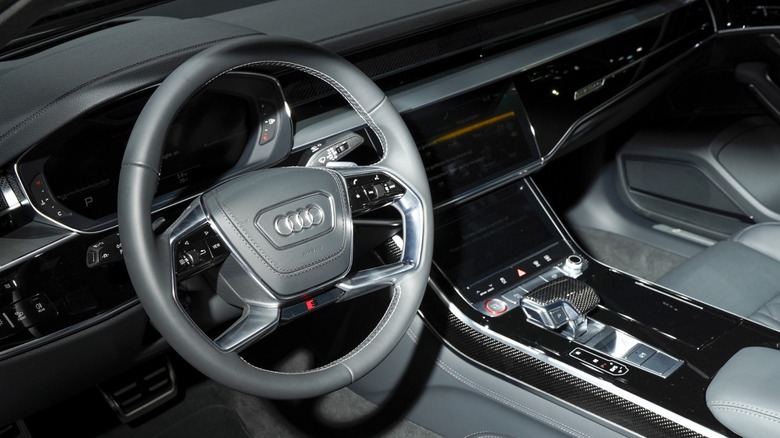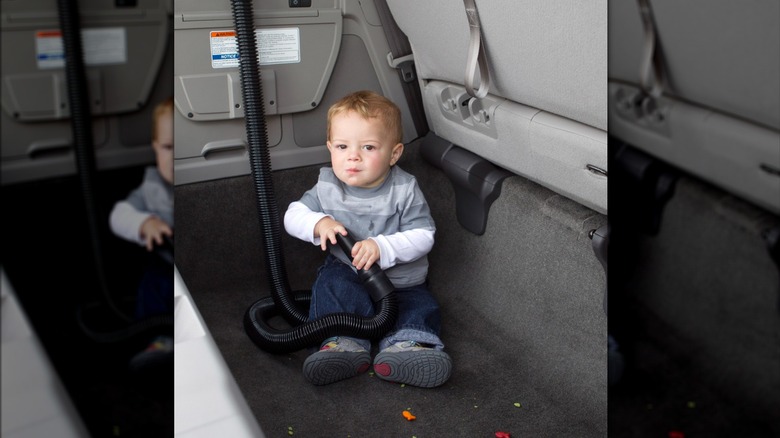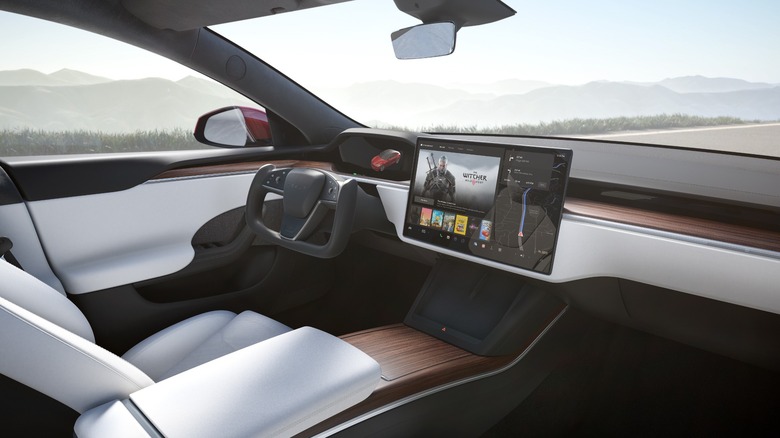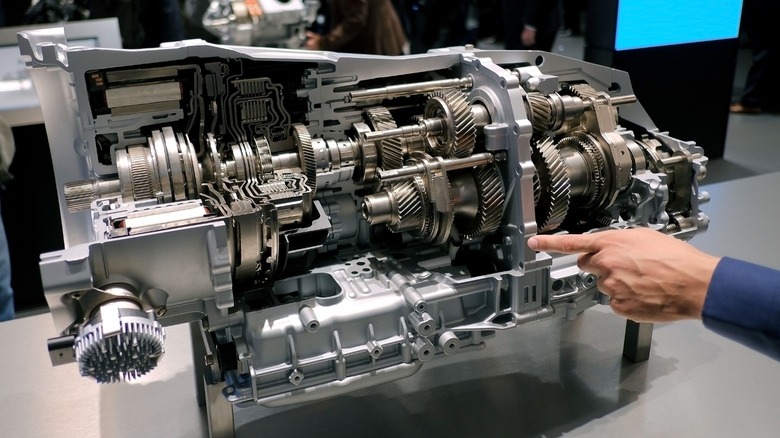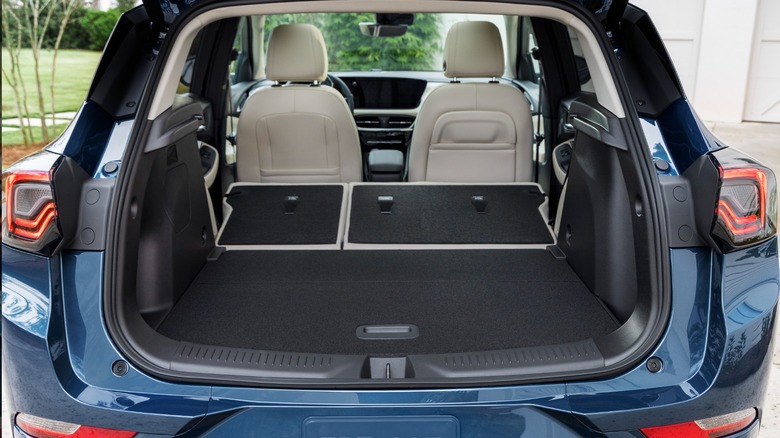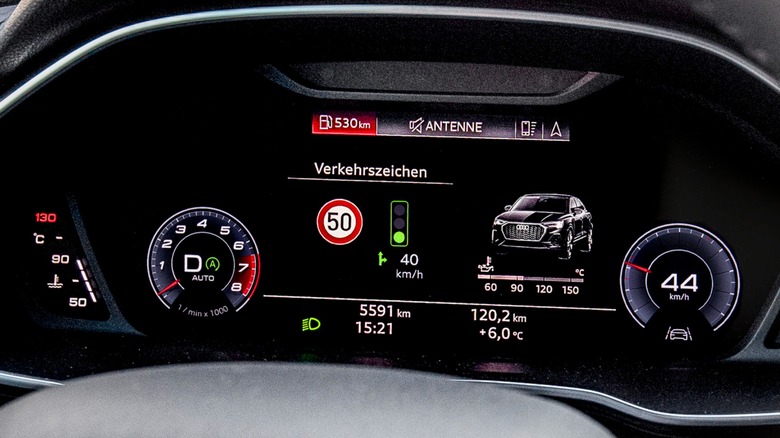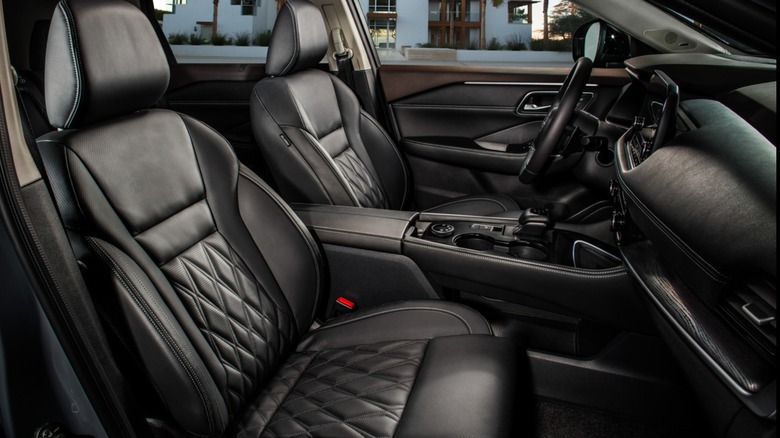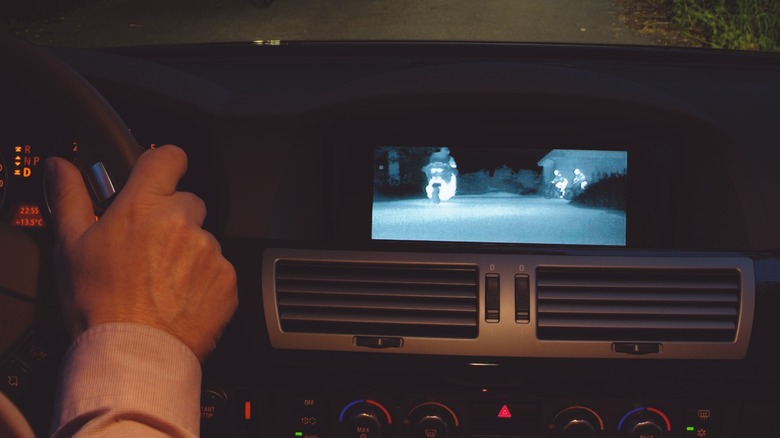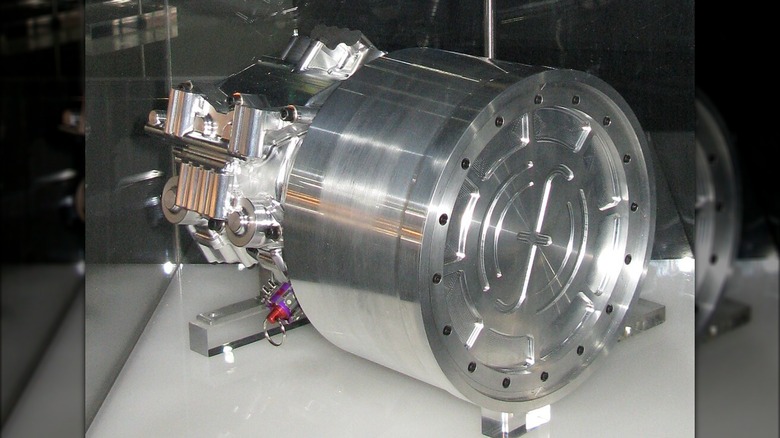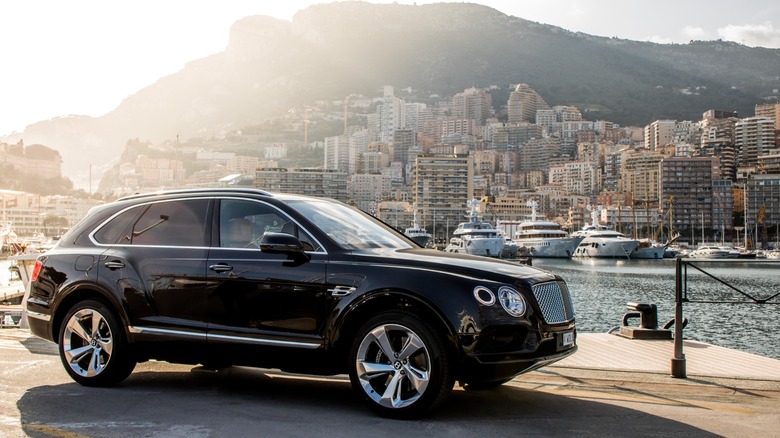10 Features You Might Not Know Your Car Has
You know your car has a radio and air conditioning. But perhaps you either bought your car used and haven't fully explored it, or your new car has a dizzying array of features, and the five hours at the dealer left little desire to get a rundown on everything your car can do. It's not just modern cars that can have numerous and overlooked features, some antiques, especially the luxury models, were equipped with novel concepts to up the level of luxury (like the golf bag door on the side of pre-war roadsters).
When speaking of features, even a base model of a new car has a dizzying array. New cars are equipped with touchscreen radios with integrated climate control, blind spot monitoring, and digital gauges, all of which are not exclusive to high-end models. There are also many federally mandated features such as backup cameras (2018), multiple airbags (1999), and an emergency release inside the trunk (2000). If you've bought a new car recently, first, you probably spent way more time at the dealer than is comfortable, and second, you likely left without a demonstration of every single button because of that burning desire to leave. So your new car may have some gadgets and whatsits of which you are unfamiliar. And if you bought a used model, it might have some unusual features that haven't carried over to newer models. Depending on which situation fits you, here are 10 features you might not know your car has.
Vacuum
As messy as your car can get, particularly with kids and even more so when on vacation, it's a wonder that a built-in vacuum didn't arrive until 2014. That is when Honda introduced its HondaVac on some trim levels of its Odyssey minivan. The HondaVac is tucked away in one of the side panels in the cargo area of the van, and is as easy as turning the ignition to the accessory position, running to the back of the van, and grabbing the hose and hitting a button. Everything is collected in a container in the panel that can be pulled out and emptied when full. It's genius!
Although thousands of product planners over the decades made the glaring oversight of not installing a vacuum in their cars, Honda started in 2014, followed by Toyota in its Sienna minivan in 2016, and finally, Chrysler installed its Stow' n Vac in the Pacifica starting in 2017. Honda did hit a snag in 2020 when the maker of its vacuum, Shop-Vac was bought by a Chinese corporation, interrupting supply. Honda omitted the option in the 2022 model but stated that they are working on a replacement supply. But for now, if you have one of these vans, you may want to see if there's a hose tucked away in its rear.
Gas mask
If you drove a WWII tank, you might expect it to be equipped with emergency gas masks, but not your car, right? Well, at least one model is equipped with something sort of akin to a gas mask that isn't really a gas mask. Certain Tesla automobiles are equipped with excellent HEPA filtration for the climate control system. The filter used on these cars is huge, spanning from side to side in front of the windshield, and you can see how much larger it is than most cars' cabin filters in replacement instruction videos on YouTube. The gas mask detail is that these cars have what's called Bioweapon Defense Mode.
The name may be a bit of hyperbole and the kind of tongue-in-cheek fun Tesla is known for, but it is also truly impressive. The filtration system is supposed to make it possible for a Tesla driver to drive the car unscathed through just about any aerial contamination. Tesla claims the naming is not just words, though. You really could survive a bioweapons attack in a Tesla thanks to its filtration eliminating almost all bacteria, pollen, smoke particles, or whatever else is in the air, making it safe to ignore those highway warning signs that say "Do not drive into smoke." But, for safety's sake, please don't drive your Tesla into smoke.
Dual-clutch transmission
For decades, our cars have come with either a manual or an automatic transmission. Most Americans just drive an automatic and never think much about it. However, you may just drive a car that is, in a way, equipped with a hybrid of manual and automatic. It's called a dual-clutch transmission (DCT), and the technology for it originated in F1 race cars.
The DCT is made with the same gear sets used in manual transmissions with similar mechanisms for gear changes, but it has an electronically controlled clutch with dual discs that can engage sequential gears in an instant. This means while one clutch is engaged to the gear you are using, the second disc is ready to grab the next gear, and this happens in milliseconds, making the shifts feel nearly seamless. Since they do not rely on hydraulic pressure to create forward motion, they are more efficient, and they can shift many times faster than the most adept human driver ever could. Your car loses less power through the DCT than through an automatic. It's a pretty cool technology that has moved from F1 racing to family cars over the years.
If you drive any Volkswagen less than about 15 years old, you have a DCT. They are also found on many Ford Focus models, Porsches, Hyundais, Alfa Romeos, and more. You might not easily be able to tell if your car has one, but your owner's manual should have that information.
Hands-free power liftgate
The hands-free power liftgate is one of the best convenience features to come out in the last several years. Power-operated liftgates on wagons and SUVs are nothing new, but opening them hands-free is. These can operate a couple of ways, and both are pretty handy. Some of them are opened if you are near the vehicle with the key fob in your pocket by sliding your foot in the air under the rear bumper. A motion sensor activates the door, leaving you to set your groceries or whatever down without fumbling for a button or key. Other systems are tuned such that if you have the fob, the rear liftgate will open specifically if you are within the close vicinity of the liftgate, requiring little thinking or effort.
Chances are, if your vehicle has this feature, you already know. However, some folks who bought used may have never waved their foot around carelessly under the bumper, lest they look foolish with an arm full of groceries doing a weird dance in the parking lot of the Buy'n'Save. Just go check yours at home, in the garage, while no one is looking. Nobody will have to know.
Traffic light detector
If you are wondering why a traffic light detector is listed because, well, obviously, you are a living breathing traffic light detector, you need to check this out. With the dynamic digital gauge clusters available these days, automakers have the ability to put pretty much anything they want in front of your eyes. Usually, this is boring stuff like your speed, the engine temperature, or maps. But some Audi models that are so equipped will display a little traffic light illustration that is magically (ok, it is actually sophisticated technology relying on the car's 4G LTE hotspot) linked to sensors in the traffic lights to offer you a countdown to when the red will go green. This offers you as the driver a good estimate of how much time you have to scratch random body parts before you need to hit the gas.
Speaking of the way this represents the increasing interconnectedness of our cars with the world around them, it is a cool feature. As far as practical applications, maybe not so much, except to give you a slight edge when lining up to race what definitely is not a cop in an unmarked Charger in the next lane. Spoiler alert — it's a cop — don't do it.
NASA seat technology
If you thought driving your Nissan was as cool as flying in some kind of spacecraft, it is not, but your seat may feel a bit like it. The reason why is that Nissan convinced NASA to take a break from its important work of studying and exploring space to help Nissan make cars more comfortable for Uber drivers, probably. When NASA was preparing to send humans into outer space and visit a celestial body that is not Earth, namely the moon, the engineers needed to ensure the astronauts would be comfortable as they'd be spending hours on end seated in these things. Many hours were spent designing a space capsule seat that would feel the most natural and positioned ideally for the shape of the human body. They must have succeeded as no astronaut has complained publicly about their sore back upon return to Earth — yet.
This partnership where Nissan probably is getting more out of the deal than NASA has resulted in finely crafted seats starting with 2022 models. These Nissan Zero Gravity Seats can be found in a wide range of Nissan vehicles, including the Maxima, Altima, Titan, and even the Versa. Unfortunately for the speed freaks with a GT-R or Z, you get no Zero Gravity seats, but special sports seats, instead.
Drowsiness detector
A potentially life-saving feature coming online with carmakers is one to tell you that driving your car on the highway is a wholly inappropriate place for a nap. You knew that, but sometimes a person is so tired it nearly happens. Now your car can detect if you are starting to nod off and give you some warnings to prevent tragedy. These systems operate using a variety of configurations. Some use cameras in the dashboard, much like those used with GM's Supercruise, to monitor the driver's behavior, while others use the lane departure system to keep drivers in check. More advanced systems incorporate a complex algorithm that studies driving habits and uses aberrations to trigger an alert, such as the Mercedes-Benz Attention Assist.
Furthermore, while it may sound like the latest feature, some manufacturers have had this in cars for years. Toyota first installed its system in select Toyota and Lexus models in 2006, with its premium Toyota Crown first receiving an update in 2008 that can detect whether the driver's eyes are open or not. Most manufacturers have settled on a coffee cup symbol for a warning light and most have an audible warning or vibrating steering wheel to go with it. So, there is a better-than-average chance your new car has this tech, and, if yours is an older luxury model, you may also have it as well.
Night Vision
If you are familiar with military hardware, you are likely aware that night vision goggles and vehicle sights have been around for decades now. Using technology such as infrared and thermal imaging, these things allow you to see objects, particularly living ones, in the pitch black night. The benefit when engaged in nighttime battle should be obvious, but the same benefit can extend to drivers on desolate highways, particularly in rural areas or the vast expanse of the American West. The dangers of coming upon wildlife on the road are significant, as a deer or moose impact can have devastating consequences on your car and yourself.
Cadillac first offered night vision in 2000 on the DeVille. Developed with Raytheon and Delphi, it used infrared sensors and projected an image through the heads-up display. However, poor response to the $2,000 option price led to its discontinuation in 2004. With new and cheaper technologies, it is coming back. With the proliferation of digital screens in cars, it makes night vision much easier to integrate and modern software makes it more effective. This option is still limited mostly to luxury cars of the past five or so years, but if you drive an older Cadillac, you may have it, too.
Kinetic energy recovery system
F1 race cars use a system that harnesses energy from braking by transferring it to a spinning flywheel that can be activated on demand for additional torque for acceleration. F1 cars can use the braking energy that would typically be wasted for a boost of power when coming out of a turn. This has since been superseded by more sophisticated hybrid systems. But like many racing technologies, it trickled down to the consumer vehicle market.
Mazda created an energy recovery system called i-ELOOP that uses deceleration forces to capture and store electricity for later use, reducing the electrical load on the engine and increasing efficiency, which improves fuel mileage. The spinning component within the alternator, the armature, is installed as a freewheeling part that continues to spin even when the engine returns to idle. Normally, armatures are driven by the engine and spin according to engine speed. The spinning motion offers kinetic energy that's converted into electrical energy by the alternator and stored in a capacitor. Capacitors are similar to batteries but can take a charge quickly and hold it for a brief period. Energy is then released back into the electrical system. Mazda claims this can improve fuel economy by about 10% and first offered this in 2012. It can be found on many models today — research your VIN to discover the car's options.
[Featured image by Geni via Wikimedia Commons | Cropped and scaled | CC BY-SA 4.0]
Active anti-roll bars
Most, if not all, cars are fitted with sway bars and they are, generally speaking, rigid but flexible pieces of steel attached to the suspension. They counteract the tendency of the car's body to lean away from the direction of a turn to keep it flat through the corners and minimize body roll. For decades this has been accomplished with round bars usually about an inch thick that attach to the spindles and axles on one end and the body of the car at the other. But, as it so often happens, engineering and technology led to active anti-roll bars.
This is one of the developments coming out of some of the most high-end automakers and is being applied to SUVs as the larger and higher bodies are susceptible to significant body roll. The forces acting on a car's suspension during cornering are immense. That's why it was only with the advent of 48-volt electrical systems that an electric servo-controlled anti-roll bar could work. Using inputs from sensors around the car, the ECU calculates how much to move the roll bar to keep the car level through turns and comfortable on straight roads. The software needed for these calculations is also quite advanced. As a result of these technological developments, active anti-roll bars are currently limited to vehicles such as the Bentley Bentayga, Porsche Cayenne, and Audi RS Q8.
